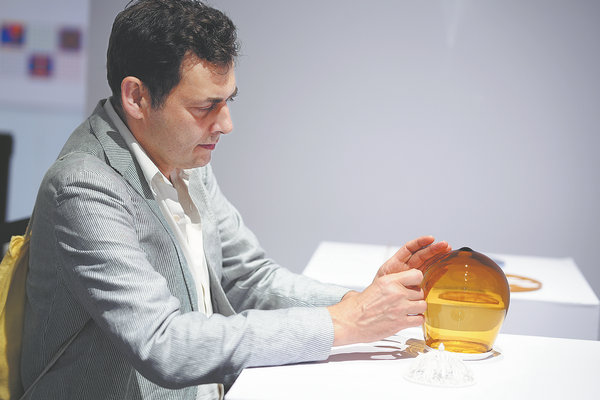

The sound and light system that added extra dimension to her work was created by South Korean artist, Han Jun-wook.
Diao thinks the collaboration lent her installation, which is one of the most interesting parts of the exhibition, a sense of uncertainty.
"You can see reflection between the boards, which casts shadows on the upper surface, creating a deeper density," Diao explains, adding that one particular area is actually composed of five layers, but they give the feeling of many more, which deepens the bamboo presence.
"It is my understanding that the techniques of intangible cultural heritage need to be passed down, while expressions of intangible cultural heritage require innovation," Diao says.
She sees intangible cultural heritage as a medium without boundaries, capable of conveying traditional themes while infusing them with new imagery and meaning.
While Han's contribution was more on the presentation of the installation, Diao believes it is integral to her work.
"We'll continue to work together to explore other installations in different settings in the future," Diao says.
For his part, Han developed an understanding of the ancient Chinese symbolism around bamboo, which is based on a play of words. The Chinese characters for the word "modesty" — xuxin — can be read literally as "hollow heart", and as bamboo is hollow at its "heart", it has become a synonym.
"I see how it can be reflective of a gentleman's integrity and modesty," Han says.
He says the exhibition is just a beginning of cooperation with Chinese artists for him.
"Hopefully, we can present bigger bamboo forests in more novel ways in the future," he says.
Zhang says that more bilateral cultural interaction through art will be arranged in the future.
"We have already done other cooperative projects involving Chinese filigree work and also Sichuan embroidery," Zhang says.
"We are looking forward to collaborating with more countries and to taking exhibits abroad," she adds.